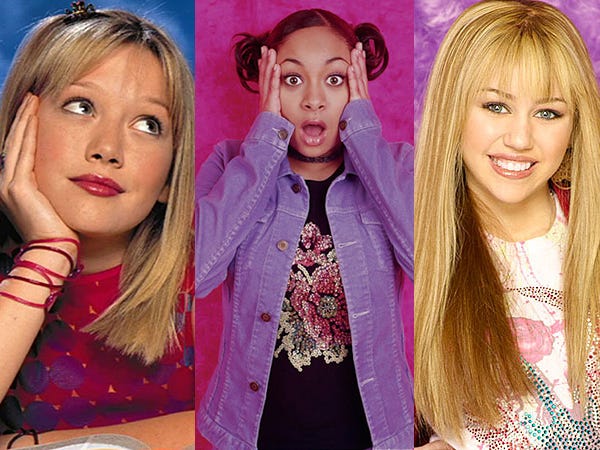Disney’s coming of age shows were the ultimate cultural zeitgeists in the early 2000s.

Fifteen years ago, Hannah Montana launched on the Disney Channel. The show ran for four seasons and redefined the childhoods of many and, of course, boosted the career of now 28-year-old Miley Cyrus. We have seen how Hilary Duff and Raven Symone pioneered their own Disney eras with their individual shows, but Miley Cyrus set a new precedent with Hannah Montana. Whilst all three shows touched on the preteen experience in the early to mid 2000s to early 2010s, Miley had that added layer of pressure — living a double life as a major pop singer, Hannah Montana.
Thanks to Disney+, I was able to tap back into my younger self and see why I loved Hannah Montana so much growing up. It brought me back to a time when I saw the movie with my friends. In honour of the 15 year anniversary, it’s time to give Miley Cyrus her flowers for pioneering a show for a new generation that in many ways found commonalities with her sometimes high-profile character.
Similar to the other shows, Hannah Montana stressed the importance of family with a heavy emphasis on a father-daughter relationship, rather than the usual nuclear family trope portrayed in the media at the time. Furthermore, Hannah Montana had a major impact on Disney and ultimately boosted Miley Cyrus’s career. Cyrus was able to perform as Hannah Montana at the 54 date The Best of Both Worlds Tour back in 2007–08, with the likes of the Jonas Brothers, grossing over $54 million and raising $2 million to fight cancer for the City of Hope National Medical Center.
In an era where social media usage is at its peak and young people have more freedom to explore their identity, like Miley Cyrus did, the character Miley Stewart was able to be herself and still be her alter-ego as a teen celebrity. Similar in today’s world, it’s been increasingly common to see young people from various backgrounds encounter social media success then struggle on how to navigate their newfound fame or deal with confused family members, but maintain the distinction of being famous online yet private in real life.
Furthermore, Hannah Montana gave ordinary young people to craft their own alternative identities and separate it from their daily lives. Pop culture essayist and author, Chuck Klosterman mentioned in Esquire that “it [social media] provides an opportunity for average people to create public identities that are entirely their own vision.” Whether Hannah influenced the influencer generation or not, we see how the show importantly set a distinction between one’s digital or public persona compared to their actual lives. Sometimes social media and always being ‘on’ digitally can be tiring and for me, Hannah Montana provides comfort in separating your personas when necessary.
In a letter written by Miley Cyrus to Hannah Montana in honour of the 15-year anniversary, Cyrus mentions “We had an equal exchange in which you provided a superlative amount of fame in return for the anonymity I could gift to you” and “how bittersweet to know I was leaving you (a huge piece of me)” in response to the final episode back in 2011.
Before the streaming era took over, channels such as Disney and Nickelodeon were instrumental in providing young girls with a sense of representation. Whether it was Hannah Montana or not, these nostalgic shows from the early aughts taught life lessons and explored the complexities of navigating a dual identity — pre-social media.
Hilary Duff was the ultimate pioneer of the awkward teenager with her middle school experiences, crushes, friendship dramas. Lizzie McGuire (which premiered in 2001) transformed from the awkward, timid teenager to a confident young woman who could stand up for herself against bullies. Infamous for her unique persona and fashion style, Lizzie McGuire reminds us that it’s OK to like what you like and to stop caring about what others think.
Next came That’s So Raven (2003), one of the best TV shows for Black teenage representation in the 2000s. That’s So Raven touched upon racism when she was told that the store manager doesn’t hire Black people in Season 3, Episode 10 ‘True Colors’. In Season 2, Episode 11 ‘That’s So Not Raven’, Raven challenges the notions of body image, fatphobia and what the ‘perfect body’ is meant to look like when entering a fashion competition.
Across generations, we have seen the success of the Disney Channel complex. Whether you believed Raven Symone, Hilary Duff, or Miley Cyrus was the Queen of Disney, Disney’s coming of age genre was iconic across the board, with a diversity of characters and experiences.
